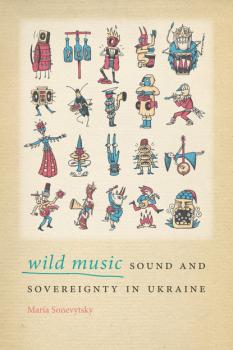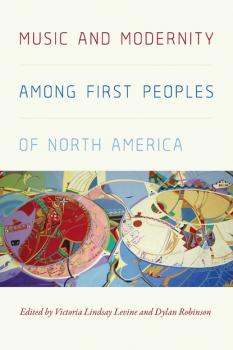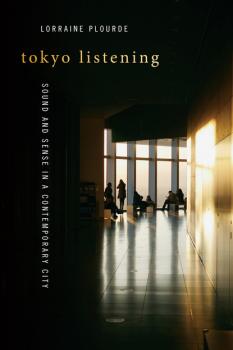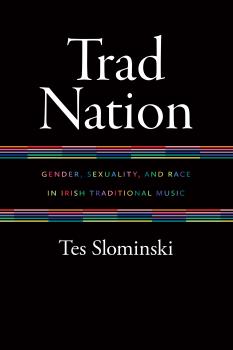ТОП просматриваемых книг сайта:
Music / Culture
Скачать книги из серии Music / CultureАннотация
<P>What are the uses of musical exoticism? In Wild Music, Maria Sonevytsky tracks vernacular Ukrainian discourses of «wildness» as they manifested in popular music during a volatile decade of Ukrainian political history bracketed by two revolutions. From the Eurovision Song Contest to reality TV, from Indigenous radio to the revolution stage, Sonevytsky assesses how these practices exhibit and re-imagine Ukrainian tradition and culture. As the rise of global populism forces us to confront the category of state sovereignty anew, Sonevytsky proposes innovative paradigms for thinking through the creative practices that constitute sovereignty, citizenship, and nationalism.</P>
Аннотация
<P>Playing It Dangerously questions what happens when feelings attached to popular music conflict with expressions of the dominant socio-cultural order, and how this tension enters into the politics of popular culture at various levels of human interaction. Tambura is a genre-crossing performance practice centered on an eponymous stringed instrument, part of the mandolin family, that Roma, Croats, and Serbs adopted from Ottoman forces. The acclamation that one «plays dangerously» connotes exceptional virtuosic improvisation and rapid finger technique and is the highest praise that a (typically male) musician can receive from his peers. The book considers tambura music as a site of both contestation and reconciliation since its propagation as Croatia's national instrument during the 1990s Yugoslav wars. New sensibilities of 'danger' and of race (for instance, 'Gypsiness') arose as Croatian bands reterritorialized musical milieus through the new state, reestablishing transnational performance networks with Croats abroad, and reclaiming demilitarized zones and churches as sites of patriotic performance after years of 'Yugoslavian control.' The study combines ethnographic fieldwork with archival research and music analysis to expound affective block: a theory of the dialectical dynamics between affective and discursive responses to differences in playing styles. A corrective to the scholarly stress on music scenes saturated with feeling, the book argues for affect's social regulation, showing how the blocking of dangerous intensities ultimately privileges constructions of tambura players as heroic male Croats, even as the music engenders diverse racial and gendered becomings.</P>
Аннотация
<P>Music and Modernity among First Peoples of North America is a collaboration between Indigenous and settler scholars from both Canada and the United States. The contributors explore the intersections between music, modernity, and Indigeneity in essays addressing topics that range from hip-hop to powwow, and television soundtracks of Native Classical and experimental music. Working from the shared premise that multiple modernities exist for Indigenous peoples, the authors seek to understand contemporary musical expression from Native perspectives and to decolonize the study of Native American/First Nations music. The essays coalesce around four main themes: innovative technology, identity formation and self-representation, political activism, and translocal musical exchange. Closely related topics include cosmopolitanism, hybridity, alliance studies, code-switching, and ontologies of sound. Featuring the work of both established and emerging scholars, the collection demonstrates the centrality of music in communicating the complex, diverse lived experience of Indigenous North Americans in the twenty-first century and brings ethnomusicology into dialogue with critical Indigenous studies.</P>
Аннотация
<P>How do people in an intensely multicultural city live alongside one another while maintaining clear boundaries? This question is at the core of The Cultural Work, which illustrates how the Maroons (descendants of escaped slaves) of Suriname and French Guiana, on the northern coast of South America, have used culture-representational performance to sustain their communities within Paramaribo, the capital. Focusing on three collectives known locally as «cultural groups,» which specialize in the music and dance traditions of the Maroons, it marks a vital contribution to knowledge about the cultural map of the African diaspora in South America, Latin America, and the Caribbean.</P>
Аннотация
<P>Tokyo Listening examines how the sensory experience of the city informs how people listen to both music and everyday, ubiquitous sounds. Drawing on recent scholarship in the fields of sound studies, anthropology, and ethnomusicology and over fifteen years of ethnographic fieldwork in Japan, Lorraine Plourde traces the linkages between sound and urban space. She examines listening cultures via four main ethnographic sites in Tokyo—an experimental music venue, classical music cafes, office workspaces, and department stores—looking specifically at how such auditory sensibilities are cultivated. The book brings together two different types of spaces into the same frame of reference: places people go to specifically for the music, and spaces where the music comes to them. Tokyo Listening examines the sensory experience of urban listening as a planned and multifaceted dimension of everyday city life, ultimately exploring the relationship between sound, comfort, happiness, and productivity.</P>
Аннотация
<P>Just how «Irish» is traditional Irish music? Trad Nation combines ethnography, oral history, and archival research to challenge the longstanding practice of using ethnic nationalism as a framework for understanding vernacular music traditions. Tes Slominski argues that ethnic nationalism hinders this music's development today in an increasingly multiethnic Ireland and in the transnational Irish traditional music scene. She discusses early 21st century women whose musical lives were shaped by Ireland's struggles to become a nation; follows the career of Julia Clifford, a fiddler who lived much of her life in England, and explores the experiences of women, LGBTQ+ musicians, and musicians of color in the early 21st century.</P>






